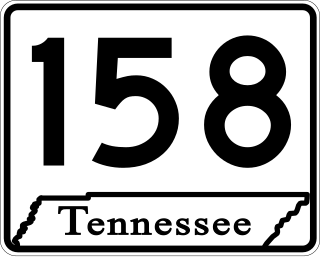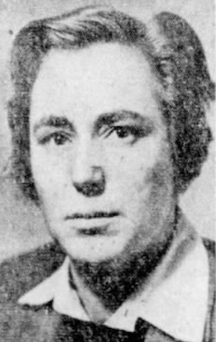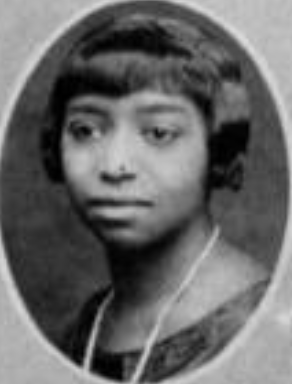
Gettysburg National Cemetery is a United States national cemetery in Gettysburg, Pennsylvania created for Union casualties from the Battle of Gettysburg in the American Civil War. The Battle of Gettysburg, which was fought between July 1 to 3, 1863, resulted in the largest number of casualties of any Civil War battle but also was considered the war's turning point, leading ultimately to the Union victory.

Knoxville College is a historically black liberal arts college in Knoxville, Tennessee, United States, which was founded in 1875 by the United Presbyterian Church of North America. It is a United Negro College Fund member school.

Interstate 640 (I-640) is an east–west auxiliary Interstate Highway in Knoxville, Tennessee. It serves as a bypass for I-40 around Downtown Knoxville and is also an alternative route for traffic passing between I-40 and I-75. All trucks carrying hazardous cargo through Knoxville are required to use I-640. It has a total length of 10.80 miles (17.38 km) and runs approximately three miles (4.8 km) north of downtown through the northern neighborhoods of Knoxville.

The Andrew Johnson National Cemetery is a United States National Cemetery on the grounds of the Andrew Johnson National Historic Site in Greeneville, Tennessee. Established in 1906, the cemetery was built around the resting place of Andrew Johnson, the 17th President of the United States, and holds more than 2,000 graves.

The Gatlinburg Bypass is a 3.6-mile-long (5.8 km) bypass road around the resort city of Gatlinburg in Sevier County, Tennessee, at the edge of the Great Smoky Mountains National Park. It runs between the Great Smoky Mountains Parkway north of the city to Newfound Gap Road (US 441), the main route through the national park. It is owned and maintained by the National Park Service (NPS) and serves as a bypass around the business district of Gatlinburg for easier access to the national park. It is also considered part of the longer Foothills Parkway, a National Parkway that traverses the foothills of the Great Smoky Mountains. The road provides overlooks with views of the city of Gatlinburg and the mountains beyond. The Gatlinburg Bypass opened to traffic in 1968.

Black Hills National Cemetery, originally named Fort Meade National Cemetery, is a United States National Cemetery near Sturgis, South Dakota. Named after the nearby Black Hills, over 29,000 interments of military veterans and their family members have taken place since its founding in 1948. It is administered by the U.S. Department of Veterans Affairs (VA), which also operates the nearby Fort Meade National Cemetery. It was the first—and currently, the only active—national cemetery in South Dakota.

The Hurricane of 1928 African-American Mass Burial Site is a pauper's cemetery and mass grave in West Palm Beach, Florida. It is listed on the U.S. National Register of Historic Places. The cemetery is situated near the junction of 25th Street and Tamarind Avenue between I-95 and U.S. Route 1. The site is the location in which 674 bodies of African Americans or those of an unknown race were buried following the 1928 Okeechobee hurricane, while most of the white victims of the storm received a proper burial at Woodlawn Cemetery due to segregation laws.

Interstate 40 (I-40) is part of the Interstate Highway System that runs 2,556.61 miles (4,114.46 km) from Barstow, California, to Wilmington, North Carolina. The highway crosses Tennessee from west to east, from the Mississippi River at the Arkansas border to the Blue Ridge Mountains at the North Carolina border. At 455.28 miles (732.70 km), the Tennessee segment of I-40 is the longest of the eight states through which it passes and the state's longest Interstate Highway.

State Route 158 (SR 158) is a major east–west state highway in the city of Knoxville in the U.S. state of Tennessee. It runs 4.63 miles (7.45 km) from Kingston Pike (US 11/US 70) along the Tennessee River to Interstate 40. The western portion of the highway is a surface street known as Neyland Drive and the eastern part is a controlled-access highway called James White Parkway. The entire highway serves as a bypass of downtown Knoxville and as a direct connector to the University of Tennessee (UT) campus and athletic facilities. Serving as the primary means of access to facilities such as Neyland Stadium and Thompson–Boling Arena, the route experiences congestion on game days, with a contraflow lane reversal implemented to mitigate this. It also serves as a spur into downtown and provides access to a number of local landmarks and historic sites, including the Blount Mansion and James White's Fort.

Loudon Park Cemetery is a historic cemetery in Baltimore, Maryland. It was incorporated on January 27, 1853, on 100 acres (40 ha) of the site of the "Loudon" estate, previously owned by James Carey, a local merchant and politician. The entrance to the cemetery is located at 3620 Wilkens Avenue.

Henry Morgan Green (1877–1939) was an American physician, a national healthcare leader, researcher, scholar, real estate investor, and alderman. He served as the city physician in Knoxville, Tennessee, and president of the National Medical Association. He was one of the founders of Knoxville Medical College; and is credited with expanding healthcare coverage for the Black community in Knoxville.
WEMG was a radio station in Knoxville, Tennessee, United States, broadcasting on 1430 kHz AM. Last owned by Word of Faith Fellowship, it broadcast from 1960 to 1988 or 1989. For most of its time on air, it was the only Black-oriented station in East Tennessee, including a decade of ownership by singer James Brown.

Ingrun Helgard Möckel, later Ingrun Neckermann was a German model and beauty pageant titleholder who was crowned Miss Germany 1960 and represented her country at Miss World 1960 but unplaced later she was crowned Miss Europe 1961.

Mildred Eloise Doyle was an American educator. She was Superintendent of Schools in Knox County, Tennessee from 1946 to 1976.

Arnetta McKamey Gravely Wallace was an American music educator and community leader, as the 14th international president of the Alpha Kappa Alpha sorority from 1953 to 1958.

Dolly Johnson, in later life known as Aunt Dolly, was a small-business owner and domestic worker. She was posthumously described as "one of the finest cooks that ever lived in Greeneville, Tennessee". Andrew Johnson, who became the 17th president of the United States in 1865, enslaved Dolly from 1843 until 1863. The paternity of Dolly Johnson's children, Elizabeth Johnson Forby, Florence Johnson Smith, and William Andrew Johnson, remains an open question in the study of the history of the United States.

Florence Johnson Smith was a mixed-race Tennessean who was enslaved from birth until approximately age 13 by Andrew Johnson, later the 17th president of the United States. She worked at the White House as a housemaid during Johnson's presidency and in his home as a cook after he left office. Her mother was Dolly Johnson; the identity of her father remains officially unknown. Since the late 20th century several scholars and popular historians have speculated or insinuated that Andrew Johnson may be Florence's biological father, although there is no evidence that either confirms the relationship or eliminates Johnson as a candidate for paternity. In later life Florence Smith may have been a woman of some financial means as she was remembered at the time of her death as a benefactress who financially supported local African-American students pursuing college educations.

Lucy Elizabeth Johnson Forby was an "estimable colored woman" of the United States.
The Freedman's Cemetery, or Freemen's Cemetery, was established in 1861 as a burial ground for the early African American population in Dallas, Texas. It was an active burial site from 1869 until 1907, supported by the historic Black settlement of Freeman's town founded by formerly enslaved people.

















